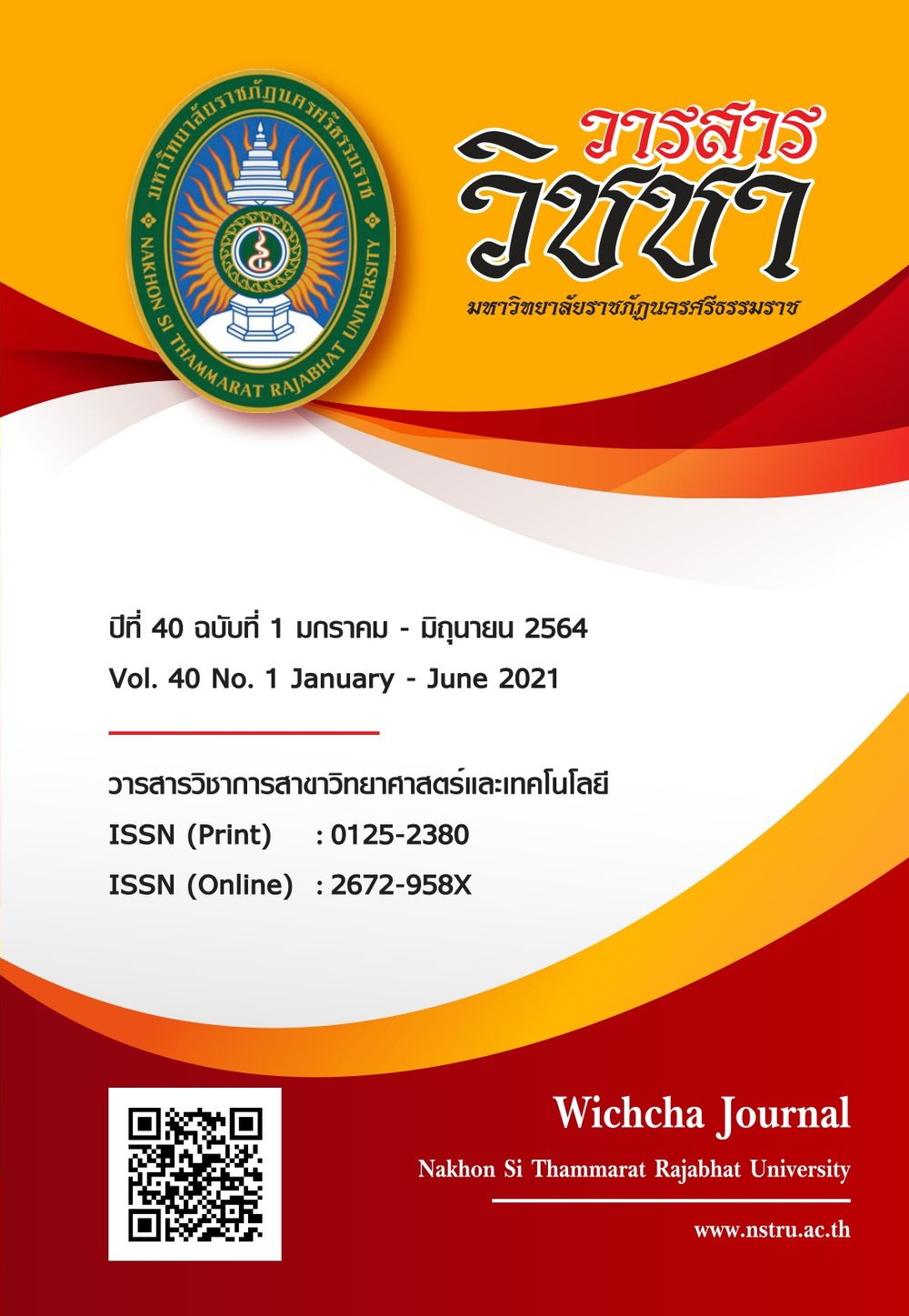Performance of Base and Shaft Grouted Steel Micropiles สมรรถนะของเสาเข็มไมโครไพล์เหล็กที่มีการอัดฉีดน้ำปูนที่ปลายและผิวข้าง
Main Article Content
Abstract
This paper presented the results obtained from the performance of steel micropiles grouted with cement both at the base and along the shaft. The tested hollow steel piles were 9 cm. in diameter, 3 mm. thick, and 2 m. long. The study began by pressing the steel piles into the sand level at the depth of 1.80 m. Then, two types of test were performed, including a normal pile and a pile with both base and shaft grouts. For the latter, the grouting process was carried out using the pressure of 5 bars; the grout then was left for 28 days to set up. After that, pile load test was conducted according to the ASTM D 1143-81 standard. From the analysis of the ultimate load of pile capacity for the normal pile with respect to Davisson’s method, it was found that the ultimate pile capacity was 2.31 tons with the settlement of 5.75 mm. When employing Terzaghi’s method, however, the ultimate pile capacity and respective settlement were 2.58 tons and 9 mm. For the grouted pile, Davisson’s method yielded the ultimate pile capacity and settlement of 2.33 tons and 5.80 mm, respectively. For Terzaghi’s method, however, it was observed that the ultimate pile capacity was 2.61 tons, while its corresponding settlement was 9 mm. From these results, it indicated that the grouted steel pipe pile has greater ultimate pile capacity than that of the normal pile. This was because the grout adhered to the pile could increase the friction between surround soil and pile shaft thereby increased the pile capacity.
Article Details
เนื้อหาและข้อมูลในบทความที่ลงตีพิมพ์ในวารสารวิชชา มหาวิทยาลัยราชภัฏนครศรีธรรมราช ถือเป็นข้อคิดเห็นและความรับผิดชอบของผู้เขียนบทความโดยตรง ซึ่งกองบรรณาธิการวารสารไม่จำเป็นต้องเห็นด้วยหรือร่วมรับผิดชอบใด ๆ
บทความ ข้อมูล เนื้อหา รูปภาพ ฯลฯ ที่ได้รับการตีพิมพ์ในวารสารวิชชา มหาวิทยาลัยราชภัฏนครศรีธรรมราช ถือเป็นลิขสิทธ์ของวารสารวิชชา มหาวิทยาลัยราชภัฏนครศรีธรรมราช หากบุคคลหรือหน่วยงานใดต้องการนำข้อมูลทั้งหมดหรือส่วนหนึ่งส่วนใดไปเผยแพร่ต่อหรือเพื่อการกระทำการใด ๆ จะต้องได้รับอนุญาตเป็นลายลักษณ์อักษรจากวารสารวิชชา มหาวิทยาลัยราชภัฏนครศรีธรรมราชก่อนเท่านั้น
The content and information in the article published in Wichcha journal Nakhon Si Thammarat Rajabhat University, It is the opinion and responsibility of the author of the article. The editorial journals do not need to agree. Or share any responsibility.
References
Abdollahi, K. and Mortezaei, A. (2015). A new expression for determining the bending stiffness of circular micropile groups. Soil Dynamics and Earthquake Engineering, 77, 58-70.
American Society for Testing and Materials. (1994). ASTM D 1143-81 (reapproved 1994): standard test method for piles under static axial compressive load. Retrieved 14 April 2019, from: https://www.astm.org/DATABASE.CART/HISTORICAL/D1143-81R87E1.htm.
American Society for Testing and Materials. (1998). ASTM D 422-63: standard test method for particle-size analysis of soils. Retrieved 14 April 2019, from: https://www.astm.org/DATABASE.CART/HISTORICAL/D422-63R98.htm.
American Society for Testing and Materials. (2014). ASTM D 854-00: standard test methods for specific gravity of soil solids by water pycnometer. Retrieved 14 April 2019, from: https://www.astm.org/DATABASE.CART/HISTORICAL/D854-00.htm.
American Society for Testing and Materials. (2017). ASTM D 2487-17: standard practice for classification of soils for engineering purposes (unified soil classification system). Retrieved 14 April 2019, from: https://www.astm.org/DATABASE.CART/HISTORICAL/D2487-17.htm.
Davisson, M.T. (1973). Static load testing. Helical screw foundation system design manual for new construction. Chicago: Illinois Institute of Technology.
Francis, A.J., Savory, N.R., Stevens, L.K. and Trollope, D.H. (1961). The behaviour of slender point-bearing piles in soft soil, symposium on design of tall buildings. Hong Kong: University of Hong Kong.
Justo, E., Vázquez-Boza, M., Justo, J.L. and Arcos, J.L. (2017). An elastoplastic model for the analysis of a driven pile extended with a micropile. Computers and Geotechnics, 87, 10-19.
Meyerhof, G.G. (1951). The ultimate bearing capacity of foundation, Geotechnique, 2(4), 301-332.
Terzaghi, K. (1967). Soil mechanics in engineering practice, (2nd ed). New York: John Wiley & Sons.


